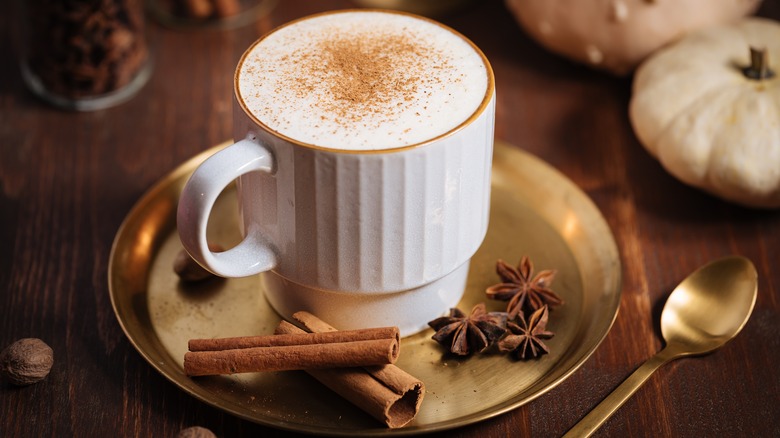The Perfect Milk-To-Coffee Ratio For Your Homemade Cappuccino
Cappuccino, perhaps the most well-known of the gourmet coffee drinks, originated in Austria but was refined by the Italians to become the most delicious way to start the morning (per Secret Vienna). In Italian, cappuccino means "little cap," referring to the frothy foamed milk on top of the espresso. According to popular belief, the drink was named after the Capuchin monks, who, with their brown hooded cowls and shaved heads, closely resembled the ring of cream and white foam on top of the dark brown coffee.
There is nothing like a good cup of coffee in the morning, whether it is to wake us up and help get our blood moving or to enjoy the simple pleasure of drinking it with friends at the local coffee shop. For many of us, gone are the days when we simply brewed plain old black coffee on the stove or perhaps picked up a cup at the 7-Eleven on our way to work; today, we are forced to choose between countless varieties of beans and flavorings, and most households likely have the equipment to make the drinks that neighborhood cafés specialize in.
So how can the average Morning Joe or Jane make a cappuccino at home, and what is the secret method coffeehouses use to create this special drink?
Be a professional barista at home
Cappuccino is a blend of espresso and steamed milk, which is topped off by a layer of creamy foam. To make the perfect cappuccino, use a 2-1 ratio of milk to coffee — one-third steamed milk, one-third creamy foam, and one-third espresso. This combination is preferred by people who like their coffee strong but also milky. And because a cappuccino requires a large amount of foam, it's important to nail the frothing method. While this ratio is commonly employed in upscale coffee houses in the U.S., it isn't necessarily the universal measurement used in other countries. For example, in Italy, they use less coffee in their cappuccino, blending one-fifth espresso with two-fifths hot milk, and two-fifths foam on top (per Horeca Masterschool).
Discerning coffee lovers who brew cappuccinos at home are not held to any strict standard regarding the milk-to-coffee ratio; it's just meant as a useful guide. This is partially because proportions can be modified based on the type of milk used. Whole milk is often touted as the one best for frothing due to the higher fat content, but dietary issues and preferences come into play, so folks often substitute low-fat milk or non-dairy options, such as oat and cashew milk. The result is a difference in foam texture and richness, but we encourage such experimentation.

